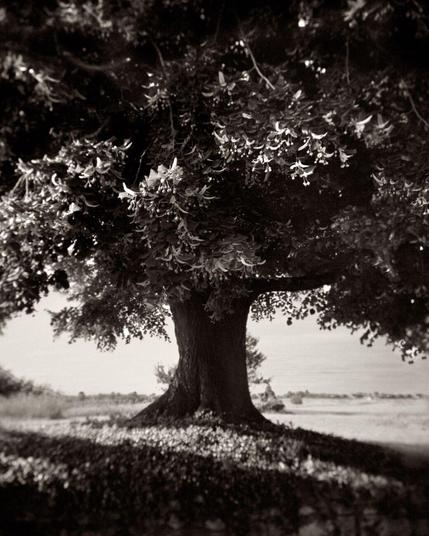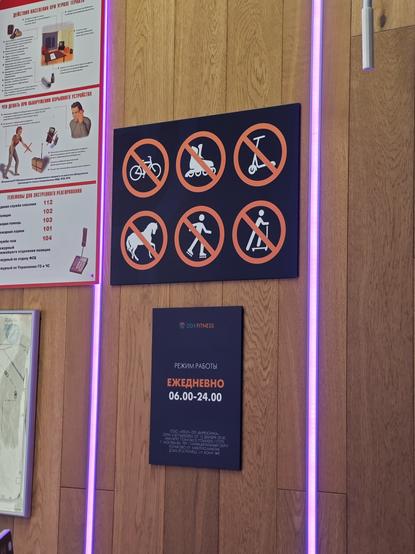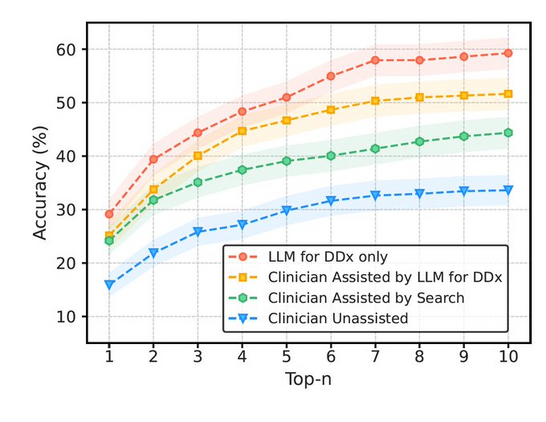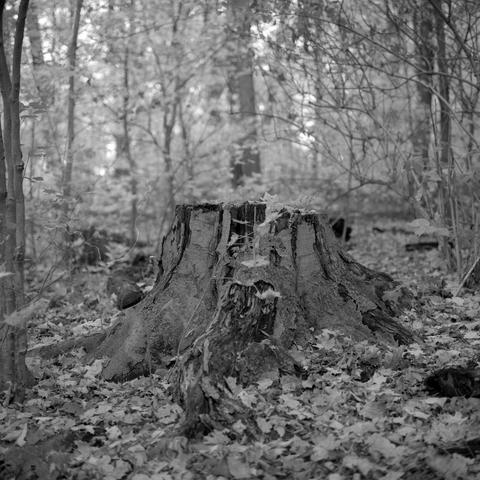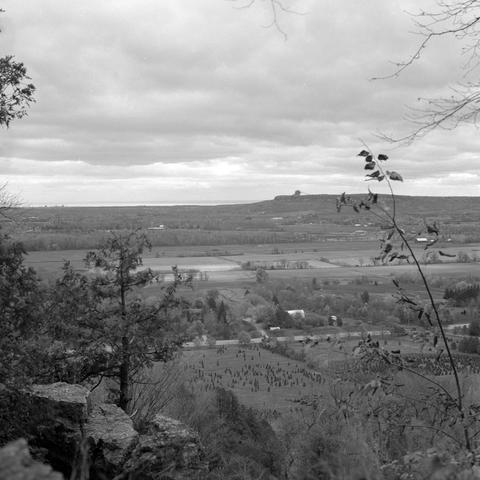Lime Tree, La Noraie, Luçay-le-Mâle, France. August 2021. Ref-11606
https://www.denisolivier.com/photography/lime-tree-la-noraie-lucay-le-male-france/en/11606
#ddx #holgagn #garden #ilfordddx #holga120gn #nature #denisolivierphotography #denisolivier #denisolivierphotographer #tmax #countryside #kodaktmax #limetree #tree #denisolivierphoto
#ddx
صرافی دریوا دائو (Deriva DAO) یک پلتفرم غیرمتمرکز با عملکرد بالا و امنیت بینظیر است. با توکن DDX و ویژگی های حاکمیت و استخراج بیمه، تجربه ای عالی برای معامله گران فراهم میکند. 🚀🔐
لینک خبر:https://zurl.co/KAJfC
Впервые вижу, чтобы на коне нельзя было в тренажерный зал
J'ai fais mon #DDX #Dodécaudax d'octobre, le 31 octobre et cette semaine j'ai le COVID... j'ai eu chaud 😅!
J'ai aussi fait de le #DDX le 1er novembre, tranquille du coup .
Not very superb corvid
Taken on May 13, 2009, Beckton Park, London, using Zenza Bronica ETRSi, 150mm MC lens, Fuji Neopan 400 film, Ilford DD-X developer
flic.kr/p/6oBvZo
#UnSuperbCrow #ZenzaBronicaETRSi #Neopan #DDX #filmPhotography #filmIsNotDead #thisCrowIsDeadThough
Towards Accurate Differential Diagnosis with Large Language Models, this paper explores the use of Large Language Models (LLMs) in aiding differential diagnosis (DDx) in medical cases.
https://arxiv.org/abs/2312.00164
#AI #LLM #medical #diagnostics #generativeAI #DDx
How data from abortion rights fights in 2022 could shape 2024
Campaigns for Democratic candidates & efforts to pass ballot measures shoring up abortion access
https://19thnews.org/2023/06/data-abortion-rights-fights-election-2024/
Many of those groups have used the Democratic Data Exchange (DDx),a privately run clearinghouse serving as a center for data f. Democratic campaigns & progressive advocacy organizations.
#DemocraticDataExchange #DDx #DemocraticParty #Democrats #data #DataAnalytics #polling #2024Election #abortion #AbortionRights
The camera I sent away for repair, I think it's fixed now. Much love to Luton Camera Repair Services http://www.lutoncameras.co.uk #Ilford #delta400 #mamiya #C220 #DDX #FilmPhotography #greyhound #dogsOfMastodon
Film Development – Picking A Black & White Developer
Despite being far more niche these days, film photography still hangs on. And while there are plenty of options out there for getting your films lab developed and colour film developed, both C-41 and E-6 is fairly uniform no matter what chemical you buy. Except for E-6, Cinestill has a unique E-6 kit, but that's a whole other thing. When it comes to Black & White, there is a tonne of options available to you for development. It can seem a bit overwhelming at times. But I have spent close to a decade developing my own Black & White at home and have tried a pile (but not all) of developers out there. If you're getting started with home development, hopefully, I can guide you through some options to help make your life easy and give you some information and background for picking a developer to suit your needs.
The GP Developers
If you only have room in your chemistry set for three developers, these four are the ones that will deliver and be able to develop any B&W film in any given situation. While they won't be the best for any push or pull development, HC-110/Ilfotec HC can work in a pinch. But for your general-purpose development or getting used to the process, these are the best ones to start with.
Kodak D-76/Ilford ID-11
When it comes to a developer that will give you a strong base and economical, Kodak D-76 or Ilford ID-11, this is a developer that will do it all, developing both B&W films and B&W Papers. It is also an economic developer as you can mix it up from powder and then develop right off the bat from this stock solution. One gallon will develop x rolls of film, which runs out to a cost of x per roll. But you can also dilute it down to a 1+1 or 1+2, but then it becomes one-shot (use once and dispose of). D-76 will develop both traditional and t-grained film without issue. It also shows off what a film can do; it doesn't add or subtract sharpness or grain, and there is no real change to the contrast. While D-76 is only available in 1-gallon sizes, ID-11 you can get in 1-litre quantities and larger. Plus, you can also easily mix up your own D-76. There is also a tonne of clones of this developer formula out there.
Nikon F5 - AF Nikkor 50mm 1:1.4D - Kodak TMax 400 @ ASA-400 - Kodak D-76 (Stock) 7:30 @ 20CRolleiflex 2.8F - Carl Zeiss Planar 80mm 1:2.8 - Fujifilm Neopan Acros 100 II @ ASA-100 - Kodak D-76 (Stock) 7:15 @ 20C[](https://www.flickr.com/photos/axle81401/50162309476/ "FRB No. 64 - Film Washi "D" - Roll No. 1 (Kodak D-76)")Nikon F5 - AF Nikkor 35mm 1:2D (Yellow-15) - FilmWashi Type D @ ASA-500 - Kodak D-76 (1+1) 8:30 @ 20CNikon FE - AI Nikkor 28mm 1:3.5 - Eastman Double-X @ ASA-250 - Kodak D-76 (1+1) 10:00 @ 20C
Kodak HC-110/Ilford Ilfotec HC
If you're looking for something a little more customizable and has long term shelf stability and can be adapted to adjust contrast and even act in a compensating nature, then Kodak HC-110 or Ilford Ilfotec HC plus numerous clones is an excellent choice. This liquid concentrate developer is mixed with water to make up a working solution and mixed into various assorted dilutions. Under Kodak, these are often designated by letters such as Dilution A or Dilution B, but these are also in number form, so Dilution B is 1+31 and Dilution H is 1+63. And the best part is that there are tonnes of clones out there. I've found that you can control the film's contrast by making your HC-110 either stronger or weaker and help either increase or decrease any inherent contrast in the film. You can also use the more dilute versions to compensate to preserve highlight and shadow detail. Plus, with a highly dilute (1+150), do a semi-stand development with B&W films.
Minolta XE-7 - Minolta MD W.Rokkor-X 28mm 1:2.8 - Svema FN64 @ ASA-64 - Kodak HC-110 Dil. H 16:00 @ 20CMamiya m645 - Mamiya-Sekor C 1:2.8 f=80mm - Lomography Potsdam 100 @ ASA-100 - Kodak HC-110 Dil. E 6:00 @ 20CNikon FM - AI Nikkor 28mm 1:3.5 - Fomapan 100 @ ASA-100 - Ilford Ilfotec HC (1+79) 12:00 @ 20CMinolta Maxxum 9 - Minolta Maxxum AF 28-135mm 1:4-4.5 - Kodak Tri-X 400 @ ASA-250 - Ilford Ilfotec HC (1+39) 9:00 @ 22C
Rodinal
Rodinal is the oldest commercial developer out there; it is bulletproof, lasts a long time and can be customized to suit your needs. While it isn't known to produce the finest grain, it certainly will deliver sharpness and solid contrast reproduction. Great for films that already have a fine grain structure. Generally, you will mix it in two different dilutions, 1+25 or 1+50. However, I recall one photographer mentioning that he would never mix Rodinal to 1+25. At 1+25, you will see more contrast and can be used to bump up the contrast on a low contrast film or day, and 1+50 will even things out rather nicely. You can also do several types of stand development, 1+100 or an hour or 1+200 for two hours. In both these cases, the developer will give a lovely compensation and will essentially develop any film shot at any speed. While limited to push/pull applications, you can probably manage a +/- one-stop. And the stuff lasts forever; even if you find a sealed bottle of the original Agfa stuff, it will still work. These days you can find the Rodinal name used by Adox, or here in Canada, we have Blazinal.
Mamiya m645 - Mamiya-Sekor C 45mm 1:2.8 N - CatLABS X Film 80 @ ASA-80 - Blazinal (1+25) 6:30 @ 20CMinolta XE-7 - Minolta MD Rokkor-X 45mm 1:2 (Yellow-12) - Adox CHS 100 II @ ASA-100 - Adox Rodinal (1+50) 12:30 @ 20CNikon FM - AI Nikkor 28mm 1:3.5 - Ilford FP4+ @ ASA-125 - Blazinal (1+100) 1:00:00 @ 20CRolleiflex 2.8F - Carl Zeiss Planar 80mm 1:2.8 - Kodak Verichrome Pan @ ASA-125 - Agfa Rodinal (1+200) 2:00:00 @ 20C
Kodak TMax Developer/Ilford Ilfotec DD-X
I almost considered putting TMax Developer and DD-X into the Speciality category. Still, I quickly realized that many people only use this developer style, and it does make for a good GP developer! While not a direct analogue, they are both designed to get the most out of modern TMax and Delta films or any modern emulsion. But they work well on other films; while they are not as economical as D-76, Rodinal, or HC-110, you can reuse a 1+4 dilution mixture at least for a few rolls of films. They also have compensating qualities that help with push processing or challenging films. Most of the time, you're working with a 1+4 or 1+9 dilution. While I don't use them every day, I know many people who do and have never been disappointed with the results.
Rolleiflex 2.8F - Carl Zeiss Planar 80mm 1:2.8 - Fomapan 400 @ ASA-400 - Kodak TMax Developer (1+4) 8:00 @ 20CModified Anniversary Speed Graphic - Schneider-Kreuznack Angulon 1:6,8/90 - Kodak Tri-X Pan (320TXP) - Kodak Tmax Developer (1+4) 8:00 @ 20COlympus OM-2n - Olympus G.Zuiko Auto-S 1:1,4 f=50mm - Kodak TMax 400 @ ASA-400 - Ilford Ilfotec DD-X (1+4) 8:00 @ 20CRolleiflex 2.8F - Carl Zeiss Planar 80mm 1:2.8 - Ilford Delta 400 @ ASA-200 - Ilford Ilfotec DD-X (1+4) 6:00 @ 20C
Speciality Developers
Once you start getting into over and underexposure of your films, most general-purpose developers will be less than ideal for the push and pull processing needed. I say that lightly as I've had excellent luck with push processing in TMax Developer/DD-X and highly-dilute mixtures of HC-110. But the developers below are ones that I know do an excellent job in reducing the effects of the modifications and pushing and pulling in development.
Kodak XTOL
While many people use XTOL for high-volume development personally, I find it excellent for helping to tame the grain and contrast when you under-expose film (shooting it at a higher speed) and then push processing. Not only that, it is the newest developer to come out of Kodak. It also is slightly more environmentally friendly than traditional developers. And XTOL does what it claims to do; it lessens grain without reducing sharpness and also middles out the film's contrast. It also does a fantastic job when over-exposing and pulling the film in development. The one downside is that you can only get XTOL in volumes of five litres minimum. Kodak had released a one-litre kit, but it proved unstable.
Intrepid - Schneider-Kreuznach Symmar-S 1:5.6/210 - Kodak TMax 100 @ ASA-32 - Kodak Xtol (1+1) 8:00 @ 20CHasselblad - 500c - Carl Zeiss Distagon 50mm 1:4 - Fuji Acros 100 @ ASA-100 - Kodak Xtol (stock) 8:00 @ 20CNikon F5 - AF-S Nikkor 14-24mm 1:2.8G - Rollei RPX 400 @ ASA-400 - Kodak Xtol (1+1) 12:00 @ 20CNikon F2 Photomic - AI-S Nikkor 50mm 1:1.4 - Holga 400 @ ASA-400 - Kodak Xtol (1+1) 9:30 @ 20C
Ilford Microphen
Probably my hands down favourite developer when push developing films. But it is best used when you under-exposure and push process films. While you can shoot films at box speed, I do find it doesn't work as well, often reducing contrast and softening the images. But working in the ideal conditions or one or two stops under the developer will even out the contrast, tame the grain and keep the film's inherent sharpness. I find it works best with traditional films (FP4+, HP5+) over T-Grain films. The best part is that it comes in one-litre kits and can develop ten rolls per litre with minimal adjustment in times.
Nikon FM - AI-S Nikkor 105mm 1:2.5 - Fomapan 100 @ ASA-100 - Ilford Microphen (1+1) 9:00 @ 20CMamiya m645 - Mamiya-Sekor C 1:2.8 f=80mm - Lomography Berlin 400 @ ASA-400 - Ilford Microphen (Stock) 7:00 @ 20CNikon F5 - AF DC-Nikkor 105mm 1:2D - Kodak Tri-X 400 @ ASA-1600 - Ilford Microphen (Stock) 12:00 @ 20CMinolta Maxxum 9 - Minolta Maxxum AF 28mm 1:2.8 - Kodak Tri-X 400 @ ASA-800 - Ilford Microphen (Stock) 11:00 @ 20C
Ilford Perceptol
While Microphen handles under-exposure, Perceptol is excellent at over-exposure and pull development. Again you can shoot your film at box speed and develop normally, but it works the best with slight overexposure (shooting film slower than box speed). It does help bump up the contrast slightly and then increase the grain slightly, if only to improve edge sharpness. At the same time, it doesn't spend a lot of time in my chemistry cabinet. The downside is that a one-litre kit will only handle four rolls of film at the stock solution, and it is fairly expensive for the volume of chemistry.
Mamiya m645 - Mamiya-Sekor C 35mm 1:3.5 N (Green-1) - Ilford Ortho 80 @ ASA-80 - Ilford Perceptol (Stock) 13:00 @ 20CNikon FE - AI-S Nikkor 35mm 1:2.8 - Ilford Delta 100 @ ASA-100 - Ilford Perceptol (1+1) 17:00 @ 20CMinolta Maxxum 9 - Minolta Maxxum AF 50mm 1:1.7 - Fujifilm Neopan Acros 100 II @ ASA-80 - Ilford Perceptol (Stock) 12:30 @ 20CRolleiflex 2.8F - Carl Zeiss Planar 80mm 1:2.8 - Kodak Tri-X 400 (400TX) @ ASA-320 - Ilford Perceptol (1+1) 12:00
Specalized Developers
These developers go above and beyond your standard push/pull developers and, in some cases, even alter the films themselves. These are great for high levels of compensation or working with old and expired film stocks, or doing fine-art processes.
FA-1027/Clayton F76+
Known among many film labs as the magic juice, FA-1072, also known as F76+, is an excellent liquid developer that handles most films. But it is designed to work best with Ilford HP5+, and you know they are right! At the strongest mixture 1+9, you can develop several rolls before the working solution is exhausted, and even when the concentrated developer has turned rather yellow, it still works like a charm. Plus, you can also make the working solution more dilute to stretch out the concentrate. And since the developer contains an anti-fogging agent, it will work on expired film and reduce base fog.
Nikon FE - AI Nikkor 28mm 1:3.5 - Ilford Delta 400 @ ASA-400 - FA-1027 (1+9) 8:00 @ 20CGraflex Crown Graphic - Schneider-Kreuznach Symmar-S 1:5.6/210 - Ilford HP5+ @ ASA-400 - FA-1027 (1+14) 9:00 @ 20CHasselblad 503cx - Carl Zeiss Distagon 50mm 1:4 T* - Fomapan 100 @ ASA-100 - FA-1027 (1+14) 9:00 @ 20CHasselblad 500c - Carl Zeiss Planar 80mm 1:2.8 - Rollei RPX 100 @ ASA-100 - FA-1027 (1+14) 9:30 @ 20C
Pyrocat-HD
If you have ever shot large format, then there is a strong possibility that the words pyro developer has crossed your mind or at least your attention. While Rodinal is an old developer, the base developing agent in Pyro developers is older. While there are many flavours of Pyro developers out there, I've only had the chance to use two, the old PMK Pyro and Pyrocat-HD. Pyrocat-HD is a less toxic (but still very toxic when compared to D-76) version of PMK Pyro with shorter development times and better staining action. The developer is credited to Sandy King. This is the ultimate in compensating developers, but it also leaves a stain on your negatives, which helps with printing. It comes in two parts, mixed generally at a 1+1+100 dilution, so highly dilute. This is one of the few developers that you don't want to use a chemical stop bath, and for best results, use the Photographer's Formulary TF-4 fixer for better stain retention. If you use film that doesn't have built-in emulsion hardening, give a quick 3-4 minute in a hardening fixer.
Pacemaker Crown Graphic - Schnider-Kreuznack Angulon 1:6,8/90 - Ilford HP5+ @ ASA-200 - Pyrocat-HD (1+1+100) 9:00 @ 20CContax G2 - Carl Zeiss Planar 2/45 T* - Ilford HP5+ @ ASA-200 - Pyrocat-HD (1+1+100) 9:00 @ 20CPacemaker Crown Graphic - Fuji Fujinon-W 1:5.6/125 - Ilford FP4+ @ ASA-64 - Pyrocat-HD (1+1+100) 8:00 @ 20CKyocera Contax 645 AF - Carl Zeiss Distagon 45/2,8 T* - Kosmo Mono 100 @ ASA-100 - Pyrocat-HD (1+1+100) 12:00
Rollei Low-Contrast Developer (RLC)
Rollei Low-Contrast Developer or RLC is perhaps the most specialized developer I include in today's post. That is because RLC follows in the footsteps of several other developers designed for use with technical films. Designed to reduce contrast and provide the best results in films designed to incredibly high-resolution and fine detail, it is one of the developers you can use to develop that cold-stored Kodak Technical Pan and Agfa Copex when you don't have any Technidol or Formulary TD-3 on hand. It can also work well on regular films with a speed reduction. Sadly the bottle only has enough concentrate for four rolls of 35mm film, and it is a bit on the expensive side.
Nikon F5 - AF Nikkor 35mm 1:2D - Fujifilm Neopan Acros 100 II @ ASA-40 - Rollei RLC (1+4) 14:00 @ 20COlympus OM-2n - Olympus G.Zuiko Auto-W 1:3.5 f=28mm - Rollei Ortho 25 @ ASA-25 - Rollei Low Contrast (1+4) 8:00 @ 20CRolleiflex 2.8F - Carl Zeiss Planar 80mm 1:2.8 - Rollei Retro 400s @ ASA-200 - Rollei RLC (1+4) 9:00 @ 20CMamiya m645 - Mamiya-Sekor C 35mm 1:3.5 N - Kodak Technical Pan @ ASA-32 - Rollei RLC (1+4) 6:00 @ 20C
Now, this is only a starting point; there are tonnes of other options out there for your personal black & white development. I haven't even scratched the surface of all the wonderful developers being produced by Adox, and then there's motion picture developers, two-bath, monobath. It is a big wide world of chemistry out there today! But if this helps you get a decent set of chemistry for (almost) everything you want to do with your development, then I'm happy.
#tutorials #adox #chemistry #d76 #ddx #developers #fa1027 #film #filmphotography #hc110 #homedevelopment #ilford #ilfotechc #kodak #microphen #perceptol #photographersformulary #pyrocathd #rodinal #rolleirlc #tmaxdeveloper #xtol
Developer Review Blog No. 17 – Ilford Ilfotec DD-X
Let me start this by saying that DD-X and I have not had the best of relationships. The first time I used it I wasn't happy with my results and decided that I was never going to touch the stuff again. But hey, almost every filmstock and developer are worth a second glance. DD-X, like its Kodak cousin, TMax developer was initially designed for use with the Delta range of films, specifically Delta 3200. Ilford has two versions of this developer, Ilfotec DD which is designed mainly for automated film processors that will use a dedicated replenisher and used in the stock formulation. White DD-X designed more for home processing how I do things. If I got that wrong, please leave a comment with the correction, and I can update this post.
Technical Details
Manufacturer: Harman Technologies/Ilford Photo
Name: Ilfotec DD-X
Primary Developer: Hydroquinone
Type: One-Shot
Mix From: Liquid
Rolleiflex 2.8F - Carl Zeiss Planar 80mm 1:2.8 - Ilford Delta 400 @ ASA-200 - Ilford Ilfotec DD-X (1+4) 6:00 @ 20CRolleiflex 2.8F - Carl Zeiss Planar 80mm 1:2.8 - Ilford Delta 400 @ ASA-200 - Ilford Ilfotec DD-X (1+4) 6:00 @ 20CRolleiflex 2.8F - Carl Zeiss Planar 80mm 1:2.8 - Ilford Delta 400 @ ASA-200 - Ilford Ilfotec DD-X (1+4) 6:00 @ 20CRolleiflex 2.8F - Carl Zeiss Planar 80mm 1:2.8 - Ilford Delta 400 @ ASA-200 - Ilford Ilfotec DD-X (1+4) 6:00 @ 20C
Handling
DD-X is an easy developer to handle; you'd almost think that it had been mixed up from powder. The first thing that I noticed is how easily it pours; it's near perfectly liquid with no viscosity at all, even Kodak TMax developer is much more viscous. Most of the developing combinations used with DD-X calls for a 1+4 dilution although you can also use at 1+7 or 1+9. The official documentation calls for all dilutions are one-shot, yes even at 1+4. However, you can use that 1+4 for up to ten rolls of film, with an appropriate adjustment in developing times, with a 10% increase after that first roll and a 90% increase for roll number 10. Ilford does warn that the more you reuse that stock solution even with the time adjustments you will lose image quality. If you do want to increase the life of your concentrate, use the 1+9 dilution and adjust your times. Ilford also warns to ensure that you use at minimum 10mL of the concentrate when mixing up your working solution. DD-X has a good shelf-life a sealed bottle is shelf-stable and has a decent life when opened. Although it will yellow, it can still function normally, although you might see some degradation of image quality the longer it stays open. Even the working solution has a decent life, with it lasting up to twenty-four hours once mixed.
Minolta Maxxum 9 - Minolta Maxxum AF 28-135mm 1:4-4.5 - Ilford Delta 100 @ ASA-100 - Ilford DD-X (1+4) 10:30 @ 20CMinolta Maxxum 9 - Minolta Maxxum AF 28-135mm 1:4-4.5 - Ilford Delta 100 @ ASA-100 - Ilford DD-X (1+4) 10:30 @ 20CMinolta Maxxum 9 - Minolta Maxxum AF 28-135mm 1:4-4.5 - Ilford Delta 100 @ ASA-100 - Ilford DD-X (1+4) 10:30 @ 20CMinolta Maxxum 9 - Minolta Maxxum AF 28-135mm 1:4-4.5 - Ilford Delta 100 @ ASA-100 - Ilford DD-X (1+4) 10:30 @ 20C
Applications
Despite my initial thoughts on DD-X, I now realise that the developer is no one-trick pony. Honestly, I first thought that the only film that worked well with DD-X is Delta 100. And it's true, Delta 100 sings in DD-X. But you can get amazing results from other films so don't let DD-X go by. Before we continue, one of the best films to develop with DD-X is Delta 3200. Also, it's one of the films that I did not include in this review. Thinking back, I probably should have, but what can you do? Either way, DD-X works well with any modern emulsion, Kodak's TMax line, Ilford Deltas, along with Fomapan 400 and 200 and Fuji Acros II. But there are some surprising additions, including Adox HR-50, making it a viable developer when you cannot or don't want to invest in a bottle of HR-DEV. And it also does a good job processing traditional or classic grained films like Ilford FP4+ It also does a good job with push and pull processing thanks to its nature as being semi-compensating.
Nikon FE - AI-S Nikkor 35mm 1:2.8 - Kodak TMax 100 @ ASA-100 - Ilford Ilfotec DD-X (1+4) 7:00 @ 20CNikon FE - AI-S Nikkor 35mm 1:2.8 - Kodak TMax 100 @ ASA-100 - Ilford Ilfotec DD-X (1+4) 7:00 @ 20CNikon FE - AI-S Nikkor 35mm 1:2.8 - Kodak TMax 100 @ ASA-100 - Ilford Ilfotec DD-X (1+4) 7:00 @ 20CNikon FE - AI-S Nikkor 35mm 1:2.8 - Kodak TMax 100 @ ASA-100 - Ilford Ilfotec DD-X (1+4) 7:00 @ 20C
Qualities
Let's start with tonality, if there's one thing that DD-X can give you is amazing tonality especially when you nail the exposure on the negative, but that's your usual goal eh? The idea is to create a negative that prints easily both in a traditional darkroom or even an alternative process. And in addition to the beautiful greys, you get excellent deep blacks and bright whites. But DD-X will also deliver excellent sharpness and fine-grain. Although there is a drawback, that added tonality does step down the contrast, and if you aren't careful with your exposure, you do get a little muddled. While not a low-contrast developer, it's more of a middling force for your contrast and that probably helps knockback that contrast when pushing your film.
Mamiya m645 - Mamiya-Sekor C 1:2.8 f=80mm - Kodak TMax 400 @ ASA-400 - Ilford Ilfotec DD-X (1+4) 8:00 @ 20CMamiya m645 - Mamiya-Sekor C 1:2.8 f=80mm - Kodak TMax 400 @ ASA-400 - Ilford Ilfotec DD-X (1+4) 8:00 @ 20CMamiya m645 - Mamiya-Sekor C 1:2.8 f=80mm - Kodak TMax 400 @ ASA-400 - Ilford Ilfotec DD-X (1+4) 8:00 @ 20CMamiya m645 - Mamiya-Sekor C 1:2.8 f=80mm - Kodak TMax 400 @ ASA-400 - Ilford Ilfotec DD-X (1+4) 8:00 @ 20C
Lowdown
Despite my initial aversions to the developer, I think I have come to like DD-X and might even use it more than TMax Developer. First off, I now have a good local source for the chemical, no need to head into Toronto or pay for shipping, and I find it easier to handle while processing film. Sure you still have the issues that the chemistry is a bit more expensive, and a bottle doesn't last too long unless I decide to try the time extension, which thanks to Ilford they include all that information in the datasheet. And also if I decide to get some Delta 3200 again, DD-X will certainly be the developer of choice. These days Ilford chemistry is getting easier to find in local camera stores in Canada which is excellent because I certainly will want to continue to work and support an excellent company that is a big supporter of the film photography community.
Nikon F5 - AF Nikkor 35mm 1:2D - Adox HR-50 @ ASA-50 - Ilford Ilfotec DD-X (1+4) 7:30 @ 20CNikon F5 - AF Nikkor 35mm 1:2D - Adox HR-50 @ ASA-50 - Ilford Ilfotec DD-X (1+4) 7:30 @ 20CNikon F5 - AF Nikkor 35mm 1:2D - Adox HR-50 @ ASA-50 - Ilford Ilfotec DD-X (1+4) 7:30 @ 20CNikon F5 - AF Nikkor 35mm 1:2D - Adox HR-50 @ ASA-50 - Ilford Ilfotec DD-X (1+4) 7:30 @ 20C
Recommended Reading
Don't just take my word on DD-X check out these other blogs on the subject!
No Reviews Found on the Subject
#developerreviewblogs #adoxhr50 #bwdeveloper #believeinfilm #canada #chemistry #ddx #developerreview #film #filmdeveloper #filmisalive #filmisnotdead #harmantechnologies #ilford #ilforddelta100 #ilforddelta400 #ilfordilfotecddx #ilfordphoto #ilfotecddx #kodaktmax100 #kodaktmax400 #mamiyam645 #milton #minoltamaxxum9 #nikonf5 #nikonfe #oakville #ontario #review #rolleiflex28f #thorold
